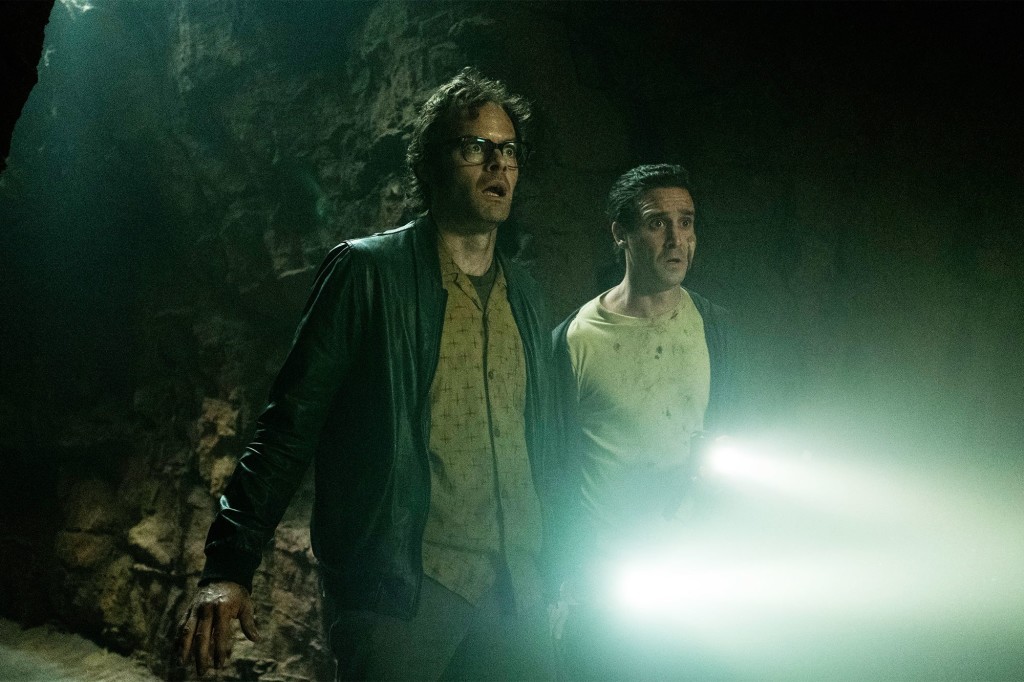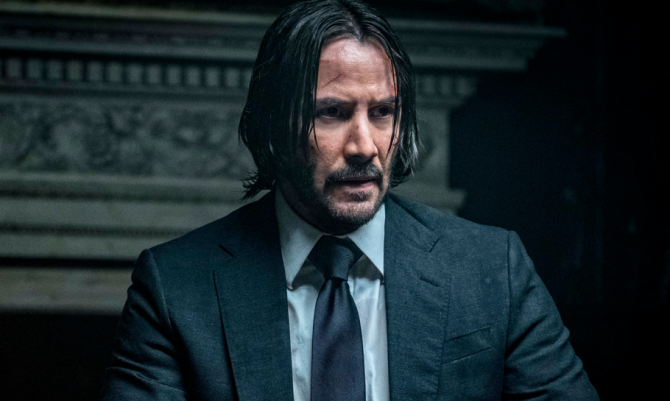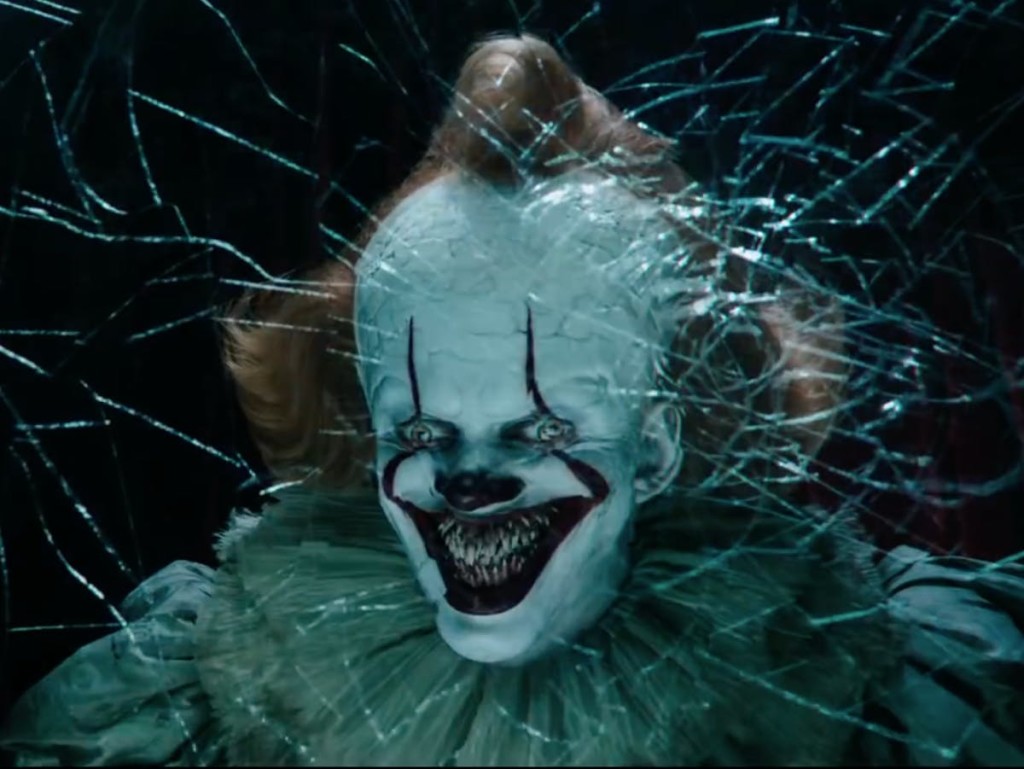This week started off on a bad note.
It: Chapter 2, a movie I once proclaimed had the potential to be the best movie of the year, turned out to be a big stinking bag of garbage. You know what kind of garbage I’m talking about. The kind where you clean out your fridge into the garbage bag but you still wait a few days before taking the bag out? Yeah, well It: 2 was SO BAD that if I were given the choice to either smell that bag for thirty minutes or sit through that 3 hour movie again, I would choose the bag.
However, then, like an angel coming down from the heavens, the Joker script arrived. How amazing was this script? It received a “double impressive!!!” I’ve given out four “double impressives” in the totality of Scriptshadow. What was interesting about reviewing these stories back to back is that I was directly able to contrast why one plunged and the other soared. Joker was great due to its utterly simple structure. It followed one man on a simple and clear journey. “It 2,” meanwhile, covered an endless number of characters, which sent the narrative in a million different directions, leaving us with a sprawling mess of a story. This, I proclaimed, is why you should always favor SIMPLE STORIES.
But there were a number of you who argued that there are lots of movies with multiple protagonists that are great. The first “It” had multiple characters and it did well. Then you have Avengers, Guardians, Fast and Furious, X-Men, Star Wars, Toy Story, Glass, Good Boys. It could be argued that Hollywood FAVORS the multiple-protagonist approach. Well hold on there, Sally. We still have John Wick, Captain Marvel, Spider-Man, Aladdin, and Shazam! to name a few of the big movies this year. But there is truth to the idea that more movies contain larger casts with sprawling stories. And that if you want to be a big-league writer – I’m talking one of these A-listers making 7 figures an assignment – you need to know how to write big sprawling complex scripts.
So let’s get the obvious out of the way. A script with a single hero is going to be easier to write. Period. If you have one hero, you only need to worry about one plot goal and one character transformation. Therefore you can focus all of your creative energy on making those perfect. That’s what Joker did. Arthur wanted to be a famous comedian. That’s his goal. His transformation revolved around an inability to connect with the world and the lengths he would go to make that connection. Boom. Perfect.
Once you move to a property like Avengers, you’re having to worry about that x 7. But let’s get something clear. Marvel is an enigma. It has two advantages nobody else has. It’s dealing with characters with 50+ years of history who the average person already knows. And they treat their films like TV shows, not movies. They’re connected. This means that by the time we get to an Avengers movie, we know everyone intimately. And that means the writers don’t have to spend precious time setting characters up or giving you important backstory, all of the things that can weigh a screenplay down. All they have to do is convey the plot clearly and occasionally check in to make sure you know what’s going on.
Bringing this back to today’s argument, you’ll never have that Marvel security blanket if you yourself write a multi-protagonist script. You’ll have to meticulously set everyone up, which will take seven times as long because you’ve got seven main characters instead of one. And then, once that’s over, you’ll have to set up what your characters are actually trying to do. And once that’s over, you have to bounce back and forth between each storyline in a way that keeps all the storylines going without us forgetting about or getting confused about what’s going on. You are also battling the juggernaut known as pacing. This is what destroyed It 2. Technically, we knew that each of the characters was trying to get their individual artifact. So there were clear character goals for everyone going into our second act. But each storyline was so similar and so monotonous that it began to feel like a relay race with the school’s slowest runners. Now it’s your turn to be see something scary. Now it’s your turn to see something scary. Now it’s your turn to see something scary. When I talk to people about that movie, that’s the section where they all say they checked out.
The problem that they run into and that you’ll run into when you try and write a big sprawling script, is that, inevitably, three or four of your characters won’t be that interesting. So now you’re stuck giving uninteresting characters full on scenes and it isn’t working because the characters are inherently flawed. Who cares about the fat kid turned hunk? Who cares about Eddie? Who cares about grown-up Beverly Marsh? She’s a dud. When you’re writing a single-hero story, you can put all of your time and effort into making that character the greatest most compelling most interesting character ever so that we’ll want to be around them every single second. This is how scripts like Nightcrawler get written.
HOWEVER, if you absolutely must write a big sprawling complex story with lots of characters, I have a few tips for you. First, use a MacGuffin. Create one thing that everybody is after. Greatest MacGuffin ever? The Ark of the Covenant. If you have a great MacGuffin, it ensures that the audience always knows what your characters are after. Whether it’s in minute 20 or minute 80, we know they’re still after that MacGuffin. And that makes up for one of the complex movie’s biggest weaknesses – its lack of focus. With a big clear MacGuffin, you can make your complex movie almost as focused as a John Wick.
Next – make sure the setup behind your characters’ motivations makes sense. The worst thing that can happen in a big sprawling movie is for the audience to start questioning why the characters are doing what they’re doing. This is what separates the great “It” from the terrible “It 2.” In the first movie, they’re kids who are STUCK IN THEIR TOWN when an evil clown starts hunting them. Think about that for a second. Kids can’t leave their homes. They are prisoners to their town until they’re old enough. This is why “It” worked so much better. Our characters had no choice but to fight the clown.
Contrast that with It:2 where the characters are all adults, and therefore can leave whenever they want. Now I know what a few of you are thinking. “No Carson. If they leave the town, they’ll die.” Says who? How do they know that? Where’s the proof? There isn’t any. The only reason you’re saying that is because a character said it. And the only reason a character said it is because the writer realized they had to come up with a reason why these people didn’t just hightail it out of here. So MAYBE if they try and leave, they die. Maybe. Cause somehow Pennywise has that power. Maybe. — When you start forcing desperate shaky reasoning into your character’s mouths to cover up plot holes, I got news for you buddy. Your script is in major trouble. You want your logic and motivation built into the story’s foundation, like “It” had.
Finally, if at all possible, avoid fractionating your characters. JJ Abrams hasn’t talked about Rise of Skywalker much. But one of the things he made very clear was that all the characters were going to be on an adventure together this time. This is because JJ understands that the more you divide your characters up, the more potentially confusing and rambling your story gets, and the more likely you’re going to come up with a dud sub-plot, like Canto Bite. So here’s the rule. Keep all your characters together if possible. If you’re going to split them up, limit it to two groups. It’s still possible to come up with two awesome parallel plotlines in a single movie. However, if you decide to divide your big group into three or more sub-groups, you might as well call your local funeral home and ask them if you can get an early discount on a casket. It’s not that it can’t be done. And I’m not talking about splitting individuals up, which is often done during the climax of, say, a horror film. But if you’re writing one of these big sprawling movies with multiple plotlines and multiple groups of characters, the level of screenwriting expertise required to pull that off is higher than you can imagine.
This is why I tell every aspiring screenwriter: Don’t write The Godfather before you’ve proven you can write Rocky. Don’t write The Departed before you’ve proven you can write Taken. Don’t write Inception before you’ve proven you can write The Terminator. And don’t write The Dark Knight before you’ve proven you can write “Joker.”
Yo, do you have a logline that isn’t working? Are those queries going out unanswered? Try out my logline service. It’s 25 bucks for a 1-10 rating, 150 word analysis, and a logline rewrite. I also have a deluxe service for 40 dollars that allows for unlimited e-mails back and forth where we tweak the logline until you’re satisfied. I consult on everything screenwriting related (first page, first ten pages, first act, outlines, and of course, full scripts). So if you’re interested in getting some quality feedback, e-mail me at carsonreeves1@gmail.com with the subject line: “CONSULTATION” and I’ll get back to you right away!





